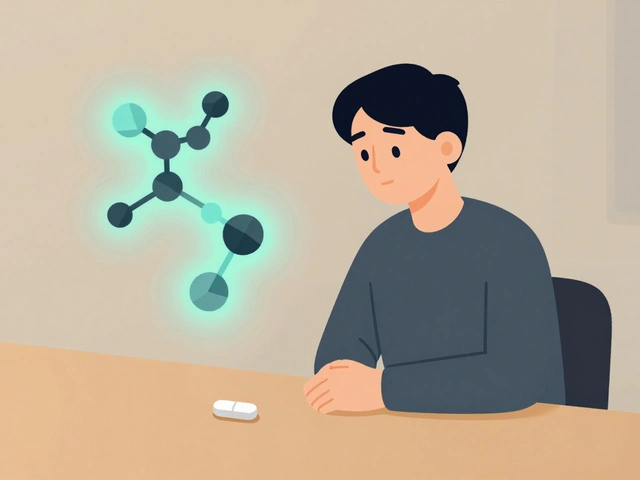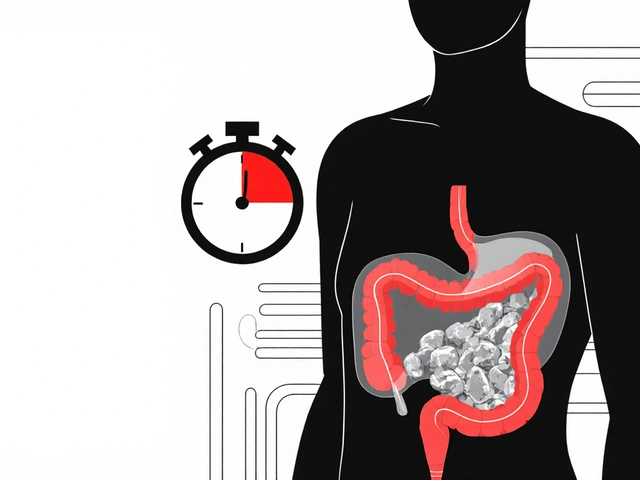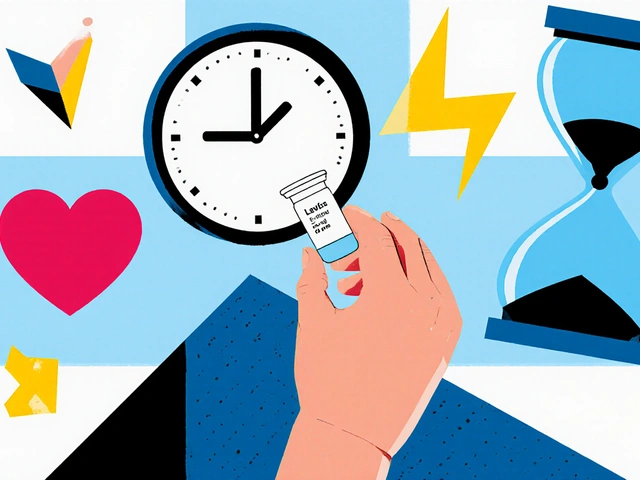The first time someone hears about steroids, most imagine bodybuilders or pro athletes. But the steroids doctors actually prescribe most—like prednisolone—have nothing to do with big muscles or cheating in sports. This medicine is often a last-resort for people who need major help fast. Kids with nasty asthma attacks get it. Adults flaring up with Crohn’s, rheumatoid arthritis, or lupus might rely on it to avoid hospital stays. It even saves eyesight for people fighting nerve inflammation. It’s powerful, it’s fast, and it can feel like a miracle. But take it the wrong way, or too long, and things can get bumpy—think moon-face, insomnia, or bone thinning. Prednisolone can be a hero or a troublemaker, depending on how you use it.
What is Prednisolone and How Does it Work?
Think of prednisolone as the “fire extinguisher” in a doctor’s toolkit for inflammation. It's a synthetic steroid, and it acts a lot like your body’s natural cortisol. But it’s way stronger and made to tackle inflammation head-on. When your immune system goes haywire, causing way too much swelling, redness, or pain—prednisolone jumps in and calms things down. It blocks certain white blood cells and all those chemicals that spark inflammation, so your body settles down and starts repairing.
This drug is a cousin of prednisone, but there’s a key detail: prednisolone is the active version, while prednisone needs your liver to convert it first. If you have liver problems, doctors go straight to prednisolone for a reliable kick. It comes as tablets, syrups (good for kids), eye drops, or even injections. People with asthma, allergies, skin rashes, colitis—you name it—have counted on it since the 1950s. But no doctor hands it out for a plain old cough. This is serious stuff—too powerful for every little sniffle.
Check out what prednisolone does when it enters your system:
- Turns down the “volume” of your immune response, so your body stops attacking itself.
- Helps unblock airways in an asthma attack by shrinking inflammation fast.
- Slows down the immune system for those with autoimmune disease, meaning less pain and better movement.
- Reduces swelling and pressure, like in eye problems or severe allergies, to prevent permanent damage.
The table below offers a snapshot of how quickly prednisolone can act depending on the problem it’s used for:
| Condition | Onset of Action | Common Dosage Range |
|---|---|---|
| Asthma Attack | 6–24 hours | 20–60 mg daily, short term |
| Rheumatoid Arthritis Flare | 24–48 hours | 5–60 mg daily, depends on severity |
| Allergic Reaction | 12–48 hours | 10–40 mg daily |
| Ulcerative Colitis | 1–4 days | 20–40 mg daily |
| Ocular Inflammation | Rapid with drops; 24–48 hours with oral | Eye drops or 10–40 mg oral |
Bottom line: If you’re facing something your body can’t handle, prednisolone can be a lifesaver—just don’t expect it to tackle every ache or fever. This drug is for real deal inflammation, not regular minor annoyances.
When Do Doctors Prescribe Prednisolone?
Doctors reserve prednisolone for stuff that just won’t calm down with milder meds. Imagine you’ve tried everything else, but your joints are still ballooning, or your skin rash won’t fade. Or maybe your kid is wheezing so badly the usual inhalers don’t help. That’s where prednisolone steps in. Asthma that lands folks in ERs? Kids with croup so bad they can hardly talk? Out-of-control allergic reactions? Steroid-dependent colitis? Even some cancers? The prescription pad comes out, and prednisolone goes to work.
Here are a bunch of conditions where prednisolone often shows up:
- Asthma and COPD flare-ups (especially severe ones)
- Allergic reactions that don’t budge with antihistamines
- Autoimmune conditions—rheumatoid arthritis, lupus, vasculitis
- Major skin problems—eczema, psoriasis, drug rashes
- Ulcerative colitis and Crohn’s disease (when other meds don’t cut it)
- Inflammatory eye diseases—like uveitis
- Certain blood disorders and cancers (as part of a broader chemo plan)
- Adrenal insufficiency—helping give the body the hormones it can’t make
Doctors don’t start with high doses for fun. They use the lowest dose for the shortest time that actually gets the job done. For kids, syrup or dissolvable tablets work best. For eye trouble, prescription drops beat pills. If you can get by with four or five days, great. If you need weeks—or months—the dose tapers down slowly to keep your body’s own steroid system from crashing.
It isn’t all “take a pill and get back to work.” If you need steroids a lot, doctors check your blood sugar, blood pressure, and sometimes bone density. Why? Because steroids—even life-saving ones—can play rough with your system. If you’re on repeat prescriptions for asthma or arthritis, you might also need a backup plan, like seeing a specialist or getting checked for osteoporosis down the line. Doctors give specific guidance for infections: steroids can mask the usual warning signs like fever. If you’ve got a fever at home and you’re on prednisolone, don’t tough it out—call your provider.
One more thing few people get told: if you’re on steroids for more than 3 weeks, your body can forget how to make its own. Don’t ever stop cold turkey. Taper off—slowly—with your doctor’s help. Coming off too fast can be dangerous, especially after high doses. Sudden stopping can trigger weakness, nausea, even fainting—because your body can’t replace the hormone quickly enough.

Knowing the Side Effects and What You Can Do
No one loves talking side effects, but this is where lots of people make mistakes. Yes, prednisolone can work wonders, but it brings its own baggage. Some stuff hits fast; other problems take weeks or months to show up. Here’s what people notice shortly after starting—a boost in energy, but trouble sleeping. Maybe your appetite jumps. You might get bloated or feel jittery. Blood sugar goes up, sometimes enough that people without diabetes tip over into high sugar levels. For a few, it’s mood swings or irritability: one day you’re fine, next you’re yelling at someone in traffic.
Then there’s the stuff that sneaks up. After a few weeks or more, there can be fat around the belly, a puffy “moon face,” and muscle weakness. Some folks bruise easy, or find cuts take longer to heal. Acne can kick up in teens and adults. And—perhaps the sneakiest—long-term high doses start to thin bones. That means osteoporosis, which is a fancy word for fragile bones that can break more easily from little bumps or falls. Women over 50 need to pay extra attention here; people with risk factors for bone loss might need extra checks or even medications to prevent fractures.
Here’s a breakdown of the most common side effects with tips to manage them:
- Insomnia: Take your prednisolone early in the day. Caffeine? Best to minimize it. Create a sleep routine—same time to bed, no screens late, a cool room helps.
- Increased appetite and weight gain: Portion control and extra protein can keep your energy up without piling on pounds. Ditch the salty snacks to avoid water retention.
- Mood changes: Track how you’re feeling. If you notice big swings, or if family says you’re acting weird, let your doctor know. Don’t ignore mental health.
- High blood sugar: If you have diabetes or prediabetes, check your sugar more often. Less processed sugar and steady meals can help.
- Bone thinning: Ask about calcium and vitamin D supplements. Some need prescription meds for bone protection. Weight-bearing exercise is your friend here, if your health allows.
- Bruising and thin skin: Be gentle with your skin—use moisturizers, avoid harsh soaps, wear protective clothing for yard work or sports.
- Slow wound healing: Clean cuts well, cover scrapes, and don’t ignore redness or oozing—see your doc for anything odd.
If you notice sudden vision changes, major mood crashes, severe muscle weakness, or any sign of infection (like a new fever), call your doctor right away. Steroids can hide infection symptoms—or, in some cases, make them worse. Every person is a little different, so keeping an eye on what changes for you is the safest bet.
Tips for Staying Safe on Prednisolone
Steroids are powerful, but safe use is all about knowing the details. Start by always following your dosing schedule—don’t double your dose if you forget one; just take the next dose as planned. If your dose is being tapered, mark your calendar so you don’t mix up days. Never quit cold turkey unless your doctor says it’s OK. If you’re prescribed an “every other day” schedule for long-term treatment, stick to it. The body likes routine, and so do your adrenal glands.
Team up with your doctor for the long run. For anyone on steroids more than three weeks, you might need extra blood tests, blood pressure checks, or diabetes screening—even if you’ve never had these problems before. If you get sick or injured, tell healthcare workers you’re using steroids. “Steroid cards” or medical alert bracelets can speak for you in emergencies if you can’t talk for yourself.
Vaccines? Live vaccines are off the table while you’re on higher doses of prednisolone (over 20 mg per day for adults, or over 2 mg/kg in kids), because your immune system’s just not strong enough for the real deal. Most regular vaccines are fine, but it’s smart to ask your provider before you get poked. If you’re heading into surgery or dental work, flag your steroid use. Your body might need extra “stress dose” steroids to handle the shock.
Into the “but what about long-term?” zone, most experts urge using the lowest dose for as short a time as possible. If your doctor plans months-long treatment, make a plan for bone health and keep up with vitamin D, calcium, and exercise. Get your vision checked if you’re on steroids longer than a few months, because of rare risks for cataracts or glaucoma. Notice strange infections—like slow-healing warts, weird mouth sores, or persistent cough? Time to call your provider.
If you’re a parent whose kiddo needs prednisolone, don’t sweat the short courses: studies show the benefits crush the risks for asthma or croup emergencies. Stick to the prescribed time—kids bounce back fast. For adults, staying safe is about honesty: tell your care team if you’re already on other steroids, have a funky medical history, or get side effects that wreck your routine.
Finally, store prednisolone in a cool dry spot, away from sunlight and out of reach of kids. Never share your pills; what’s good for one person can cause real harm to someone else. If you have leftover tablets after a completed course, drop them at a pharmacy take-back site—not down the drain or in the trash.
Prednisolone isn’t just another tablet; it’s a heavy-duty teammate for when things get serious. When used wisely, under watchful eyes, it brings relief few other drugs can match. Treat it with the respect it deserves, and it can be a genuine game-changer.







Herman Rochelle
July 18, 2025 AT 16:15This post does a great job of breaking down prednisolone into understandable parts, which is super helpful for patients who might feel overwhelmed by medical jargon. The emphasis on both the therapeutic benefits and potential risks really paints a balanced picture that respects the medication’s power.
One thing that stands out is the advice on how doctors tailor dosages individually. That’s a crucial reminder that there's no one-size-fits-all when it comes to steroids like prednisolone. People should definitely avoid adjusting doses on their own.
Also, the tips for minimizing side effects are not just useful — they’re absolutely necessary for anyone embarking on long-term treatment. Side effects can be scary if you’re not prepared, and having real-world strategies can make a big difference in adherence and outcomes.
Overall, this is an informative guide that balances clinical insights with practical wisdom. Great share!
Stanley Platt
July 20, 2025 AT 19:58Indeed, this exposition on prednisolone thoroughly elaborates on its multifaceted applications and associated precautions. What I find profoundly important is the elucidation on the physician's discernment regarding dosage calibration—a critical aspect that dictates both efficacy and mitigation of adverse effects.
The article’s clarity inspires confidence in patients, who might otherwise be daunted by the complexity implicit in steroid therapies. It is imperative that all recipients of this medication comprehend the gravity and necessity of adhering strictly to prescribed parameters.
Moreover, the section on long-term use is particularly crucial. The chronic administration of glucocorticoids often incurs systemic consequences, which demands vigilant monitoring and patient education.
In summation, this resource is a commendable synthesis of scientific rigor and patient-centered care. I would be eager to learn more about recent advancements in mitigating prednisolone side effects without compromising therapeutic benefit.
Alice Settineri
July 23, 2025 AT 05:10Omg, this piece is just dripping with *essential* info !!!! Prednisolone sometimes gets this spooky rep because of those side effects, but honestly, understanding WHY and how to handle them makes everything feel way less terrifying, ya know?
Also, I adore how the post spills the tea on the doctor's game plan for dosing—like, it's not just random magic, it's science and care intertwined. The idea that this steroid stays in the medical spotlight after decades is kind of wild and fascinating.
But hey, I'm curious—anyone here have those legit miraculous stories about how prednisolone totally changed their game? Like, tough times with autoimmune stuff or legit inflammatory beasts? I bet the side effects are a pain, but sometimes gotta take the good with the bad. Anyone wanna chime in?
nathaniel stewart
July 25, 2025 AT 15:45What I find particularly interesting here is how it details the balance required between therapeutic benefits and side effects, which is often a tightrope walk with corticosteroids like prednisolone. This balance requires careful dose management, which the article did well to describe.
It also touched on long-term use drawbacks, a topic that cannot be overstated in importance. Patients taking prednisolone for extended periods must be under close medical supervision to navigate issues like bone density loss and immune suppression.
The outlined tips for mitigating side effects genuinely enhance patient quality of life, enabling better adherence to treatment plans. Understanding these nuances is crucial and rarely adequately addressed in brief consultations.
Pathan Jahidkhan
July 28, 2025 AT 17:07Prednisolone the eternal guardian and at the same time, a whispered serpent in the halls of healing. It is fascinating how such power can be wielded from a single drug molecule—bringing relief and yet demanding respect for the chaos it could unleash.
Does not the dosage decision remind us all of fate’s delicate negotiation? The healer, the patient, and the drug, each entwined in the dance of balance. Perhaps the information presented is but a shadow of the complexities observed in real clinical theatre.
One wonders, what truths lie beneath the surface—the unseen biochemical currents shaping outcomes we only guess at. This post stokes the embers of curiosity, urging a deeper quest into the mystery of this age-old steroid.
Dustin Hardage
July 31, 2025 AT 20:40The article succinctly articulates the pharmacodynamics and therapeutic considerations surrounding prednisolone, a corticosteroid mainstay. It appreciably underscores the necessity of physician-guided dosing to mitigate risks while maximizing clinical benefits.
Notably, the piece brings pertinent attention to chronic usage ramifications, a subject warranting meticulous patient education and active surveillance. The pharmaceutical's dual-edged nature necessitates judicious administration and nuanced understanding.
Furthermore, the inclusion of patient guidance on side effect management is commendable as it facilitates adherence and psychosocial adjustments inherent to corticosteroid therapy.
It would be advantageous if future material further explored emerging adjunct therapies aimed at counteracting adverse effects without diminishing prednisolone's therapeutic efficacy.
Leslie Woods
August 3, 2025 AT 07:52This post really helped me understand what to expect if I ever need to take prednisolone. I always heard people talk about the side effects like it’s some scary medicine, but the detailed explanation here makes it feel more manageable.
It’s comforting to know there are practical tips to minimize the side effects because that’s what worries me the most. Also, knowing how doctors decide on the right dose makes me trust the process more.
I’m wondering, does anyone know what lifestyle changes can help support the body during prednisolone treatment? Like diet or exercise stuff?
Dipak Pawar
August 6, 2025 AT 09:25The pharmacological profile of prednisolone is indeed complex, woven intricately into myriad clinical scenarios. Its continued utilization is testament to its therapeutic potency despite the evolving pharmacopeia.
Reflecting upon the dosage titration segment, one notes the inherent need for personalized medicine—a paradigm progressively favored in contemporary therapeutics. The article subtly elucidates this without indulging in esoteric terminologies, making it accessible yet profound.
Moreover, the cautionary emphasis on chronic administration evokes the sobering reality of iatrogenic sequelae, necessitating vigilant monitoring and bespoke patient counseling.
One could posit that future discourse might benefit from incorporating recent empirical data on glucocorticoid-sparing agents or adjunctive therapies that mitigate the iatrogenic burden.
Jonathan Alvarenga
August 9, 2025 AT 09:05While the post admirably outlines the essential facts about prednisolone, I remain skeptical about its uncritical acceptance as a long-term solution, given the extensive side effect profile that often gets underplayed in clinical practice.
Patients frequently report debilitating issues that aren't sufficiently addressed by superficial tips or dose adjustments. The systemic nature of corticosteroid impact demands a more holistic approach than what is commonly presented here.
Moreover, the post seems to romanticize the medication’s longevity on the market as a testament to its trustworthiness, which may be misleading without acknowledging alternative therapeutics evolving within immunomodulation.
Ultimately, a more critical interrogation of both benefits and risks is essential for truly informed consent and patient empowerment.
Jim McDermott
August 14, 2025 AT 16:32I appreciate how this article lays out the practical side of using prednisolone because it’s often all medical lingo and no street talk. It does make me curious about what actually happens inside the body that causes those nasty side effects, though.
Like, why does it mess with your bones or mood? I guess that’s the trade-off for the steroid's power. Also, the personalization of dosage seems key—it’s not like you just pop any pill and hope for the best.
From a newbie perspective, knowing this makes taking prednisolone a little less scary. Would be cool if someone could share personal experiences with managing side effects.
Naomi Ho
August 17, 2025 AT 16:12This explanation of prednisolone’s uses and precautions is concise and patient-friendly, exactly what many need to empower themselves during treatment.
The outlined tips on mitigating side effects are particularly valuable, as that aspect of corticosteroid therapy is often neglected in clinical discussions. Patient-centered education undoubtedly improves outcomes.
I would also emphasize the importance of regular follow-up appointments for monitoring and dosage adjustments, which can prevent complications from escalating unnoticed.
Overall, an excellent resource to share with patients starting prednisolone this year and beyond.